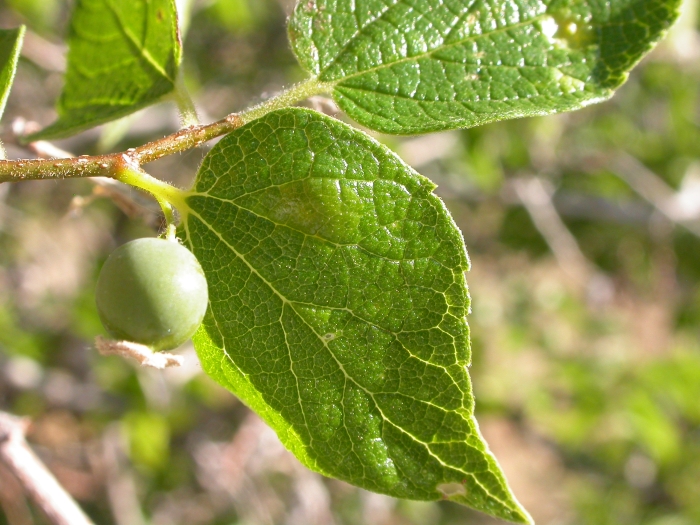Sugarberry
(Celtis laevigata)
Sugarberry (Celtis laevigata)
/
/

Matt Lavin from Bozeman, Montana, USA
CC BY-SA 2.0


















Estimated Native Range
Summary
Sugarberry is valued for its adaptability to urban environments, its attractive elm-like shape, and warty bark. It is frequently planted as a shade tree and is tolerant of a range of urban conditions, including air pollution and poor soil. The tree produces small, sweet fruits that attract wildlife, adding to its ecological benefits. Sugarberry thrives in full sun to part shade and prefers medium to fast-draining soils. It is relatively low-maintenance, requiring low to medium amounts of water once established. However, gardeners should be aware of its potential to spread if planted near natural areas, as it can become weedy.CC BY-SA 4.0
Plant Description
- Plant Type: Tree
- Height: 60-80 feet
- Width: 60-80 feet
- Growth Rate: Moderate
- Flower Color: N/A
- Flowering Season: Spring
- Leaf Retention: Deciduous
Growth Requirements
- Sun: Full Sun, Part Shade
- Water: Medium
- Drainage: Fast, Medium
Common Uses
Bee Garden, Bird Garden, Butterfly Garden, Deer Resistant, Drought Tolerant, Edible*Disclaimer: Easyscape's listed plant edibility is for informational use. Always verify the safety and proper identification of any plant before consumption., Erosion Control, Fire Resistant, Hummingbird Garden, Low Maintenance, Salt Tolerant, Street Planting
Natural Habitat
native to riverbanks, floodplains, and moist soils along streams in the Western, Central and Intermountain regions of the USA and Northern Mexico
Other Names
Common Names: sugarberry , sugar hackberry , hackberry
Scientific Names: Celtis laevigata , Celtis laevigata var. laevigata , Celtis laevigata f. microphylla , Celtis laevigata var. brachyphylla , Celtis laevigata var. anomala , Celtis americana , Celtis fuscata , Celtis grandidentata , Celtis laevigata var. apposita , Celtis occidentalis var. grandidentata
GBIF Accepted Name: Celtis laevigata Willd.